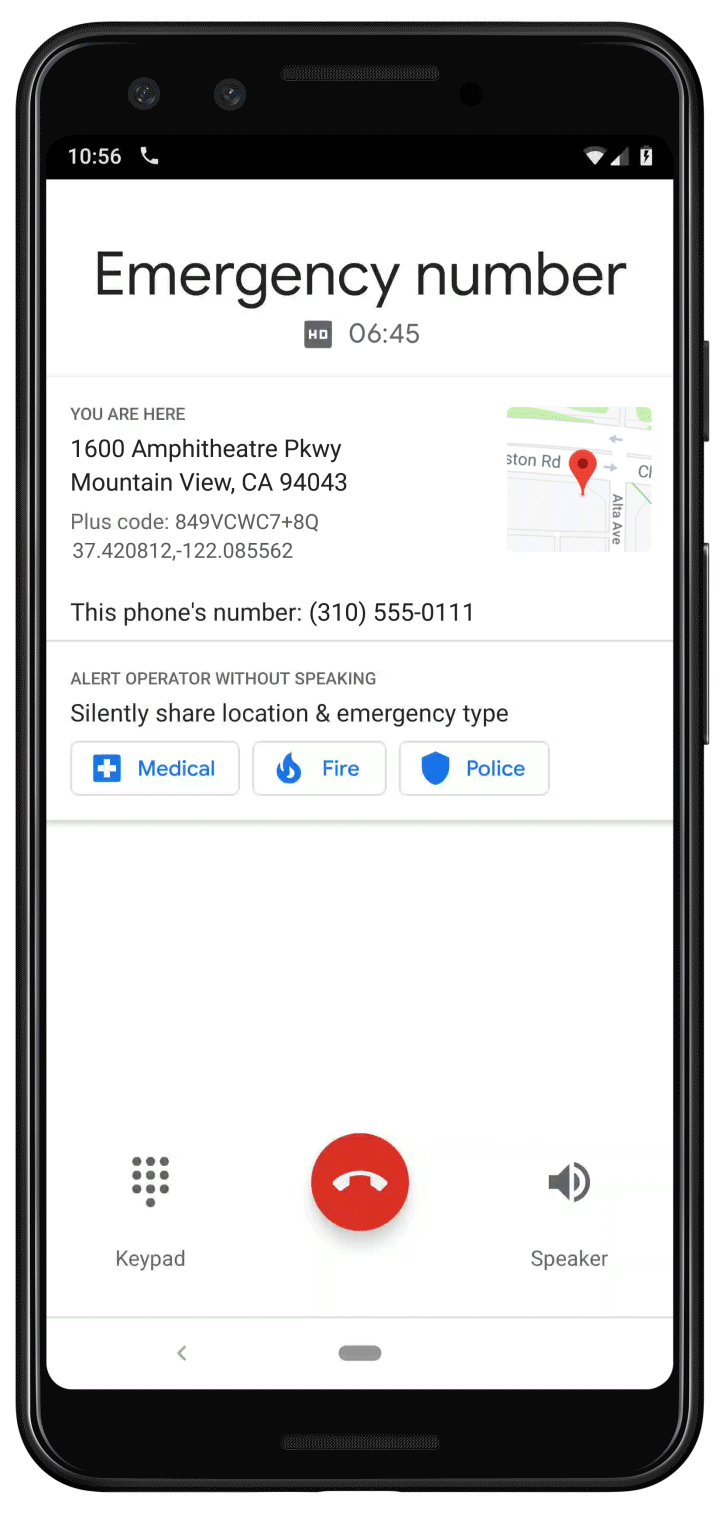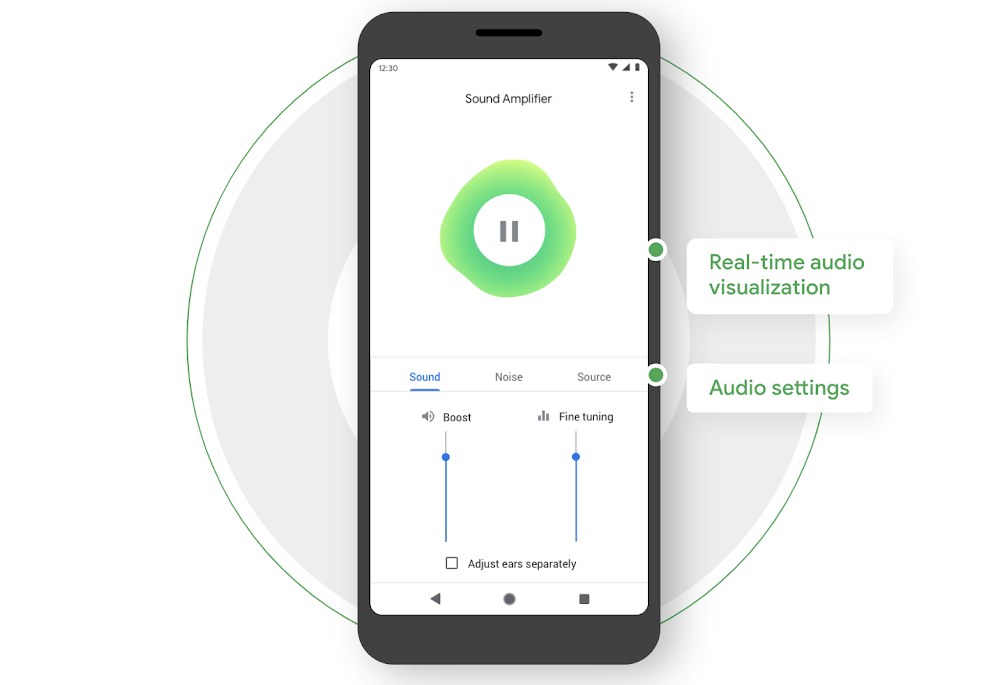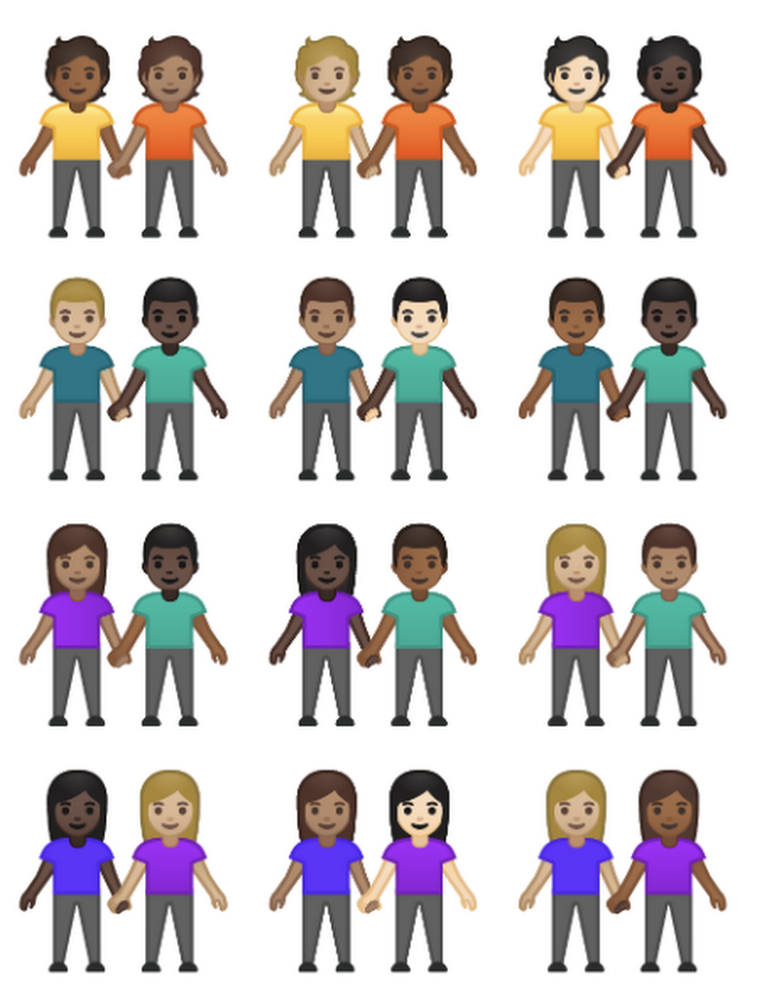Tapping on the “Medical,” “Fire” or “Police” buttons during an emergency call will convey the type of emergency to the operator through an automated voice service. That service works on device, which means the information stays between you and emergency services, and the service functions whether or not you have a data connection. After you activate the service, you can always speak directly to the operator as well.
Your location, which comes from your phone’s GPS, is often already shared with the operator when you make a 911 call. This new feature provides similar location information through the automated voice service, along with the caller’s plus code, which is another reliable way to help emergency services accurately locate them. Like the rest of the content shared with the operator using this feature, your location stays between them and emergency services.
This feature will become available in the U.S. over the coming months, starting with Pixel phones. We’ve been collecting feedback from public safety organizations, including the National Emergency Number Association, to make this feature as helpful as possible, and we look forward to continuing our collaboration with the emergency services community to make people safer.
 At I/O 2025, we shared a major update on our work on Android XR, a new platform for headsets and glasses. We also showed a demo of how Android XR glasses work. Paired wi…
At I/O 2025, we shared a major update on our work on Android XR, a new platform for headsets and glasses. We also showed a demo of how Android XR glasses work. Paired wi…
 At I/O 2025, we shared a major update on our work on Android XR, a new platform for headsets and glasses. We also showed a demo of how Android XR glasses work. Paired wi…
At I/O 2025, we shared a major update on our work on Android XR, a new platform for headsets and glasses. We also showed a demo of how Android XR glasses work. Paired wi…
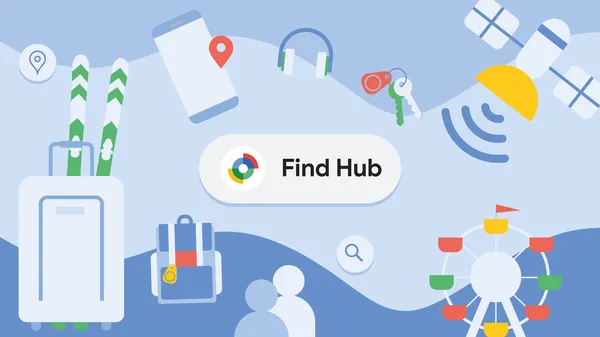 Android’s Find My Device has been helping you locate your belongings for years. Now, with the evolution of Find My Device into Find Hub, we're making it even easier to l…
Android’s Find My Device has been helping you locate your belongings for years. Now, with the evolution of Find My Device into Find Hub, we're making it even easier to l…
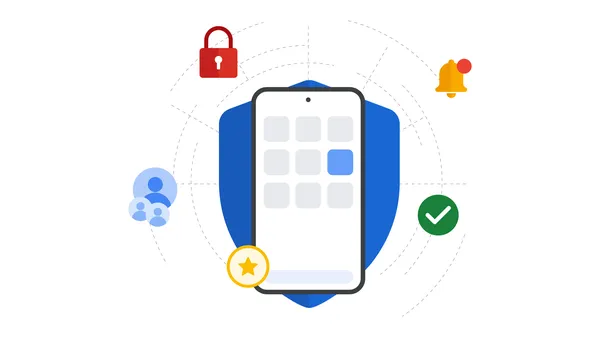 On the Android Developers Blog, we’re sharing how we're making it easier than ever for developers to build safe apps, while also continuing to strengthen our ecosys…
On the Android Developers Blog, we’re sharing how we're making it easier than ever for developers to build safe apps, while also continuing to strengthen our ecosys…
 Here’s everything we announced across Gemini and Android — plus, how we’re bringing these new capabilities to our latest Pixel devices.
Here’s everything we announced across Gemini and Android — plus, how we’re bringing these new capabilities to our latest Pixel devices.
